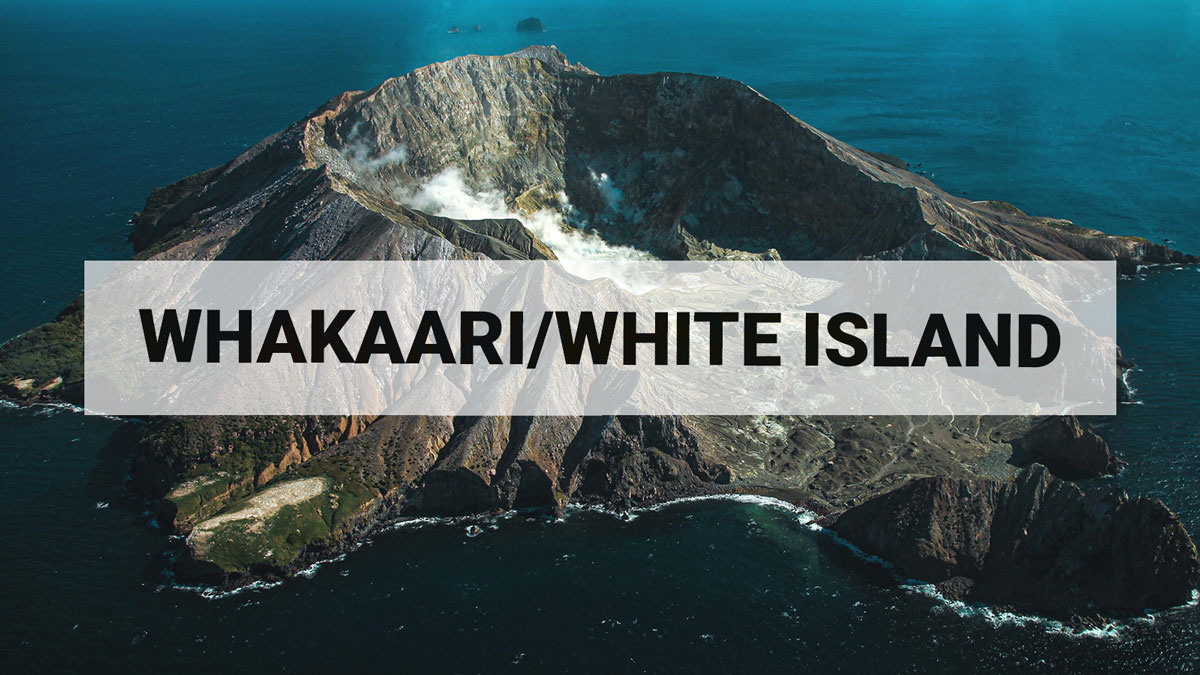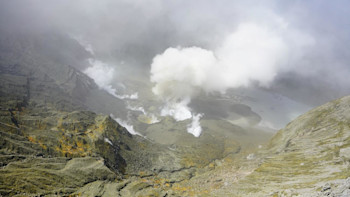
Ash emission continues at Whakaari/White Island. Volcanic Alert Level remains at Level 2.
Observations made yesterday confirm that Whakaari/White Island continues to emit volcanic ash with the steam and gas plume. The amounts of CO2 and SO2 gas have decreased. The Volcanic Alert Level remains at Level 2.
Last Wednesday (11th November 2020), a period of ash emission began at Whakaari/White Island. Ash deposits were observed on some of the island’s cameras, and at times, a darker than usual plume was reported from the mainland. Satellite images provided at that time by MetService, courtesy of the Japan Meteorological Agency, confirmed the ash emission, but later images showed little or no apparent ash.
Gas-measuring and observation flights on Monday 16th November 2020 still reported small amounts of ash in the plume (see image below). Overall, observations indicate a lower level of ash emission over the past few days.
Laboratory analyses of the ash shows it comprises hydrothermal minerals and old volcanic material (ash sediment), and that no new magma is present. The ash particles are material eroded from the 2019 vent area by the flow of steam and gas. Since Wednesday 11th November 2020, ash coating on some of the web camera windows has made it difficult to view the active vent area, and ash deposited on solar panels has reduced their capability to charge some of our monitoring stations.
The amounts of CO2 (Carbon dioxide) and SO2 (Sulphur dioxide) volcanic gases carried in the plume continue to be elevated above background levels but are now slightly lower than last week’s measurements. On Monday 16th November 2020, CO2 emission was 1937 tonnes/day, and SO2 was 710 tonnes/day. Previously (Thursday 12th November 2020), CO2 emission was 2390 tonnes/day, and SO2 was 618 tonnes/day.
During fine weather conditions, plumes of gas, steam, and possibly ash will be seen rising above the island and trailing off downwind. Should any explosive activity produce a significant ash cloud, the likelihood of ash affecting the mainland remains very low. From last week’s ash emission, there has been no reported impact beyond Whakaari/White Island. In favourable wind conditions, the current plume may be noticed on the mainland as weak acid rain.
During the past week, a sequence of small earthquakes and a larger than normal volcanic earthquake were located close to the volcano. Low-level volcanic tremor continues. This varied seismic activity is not unusual for Whakaari/White Island.
The elevated volcanic gas emission combined with the increased seismic activity confirm that Whakaari/White Island is in a period of heightened unrest. As a result, the Volcanic Alert Level remains at Level 2 and the Aviation Colour Code remains at Yellow.
The Volcanic Alert Level reflects the current level of volcanic unrest or activity and is not a forecast of future activity.
Volcanic Alert Level 2 indicates the primary hazards are those expected during volcanic unrest; discharge of steam and volcanic gas, earthquakes, landslides and hydrothermal activity. While Volcano Alert Level 2 is mostly associated with environmental hazards, eruptions can still occur with little or no warning.
GNS Science and our National Geohazards Monitoring Centre continuously monitor Whakaari/White Island for changes in activity. Further updates will be provided as needed.
Mike Rosenberg Duty Volcanologist
Media Contact: 021 574 541 or media@gns.cri.nz


